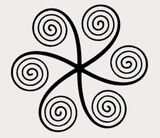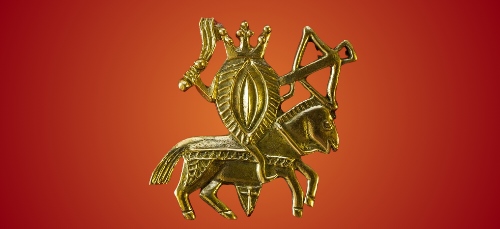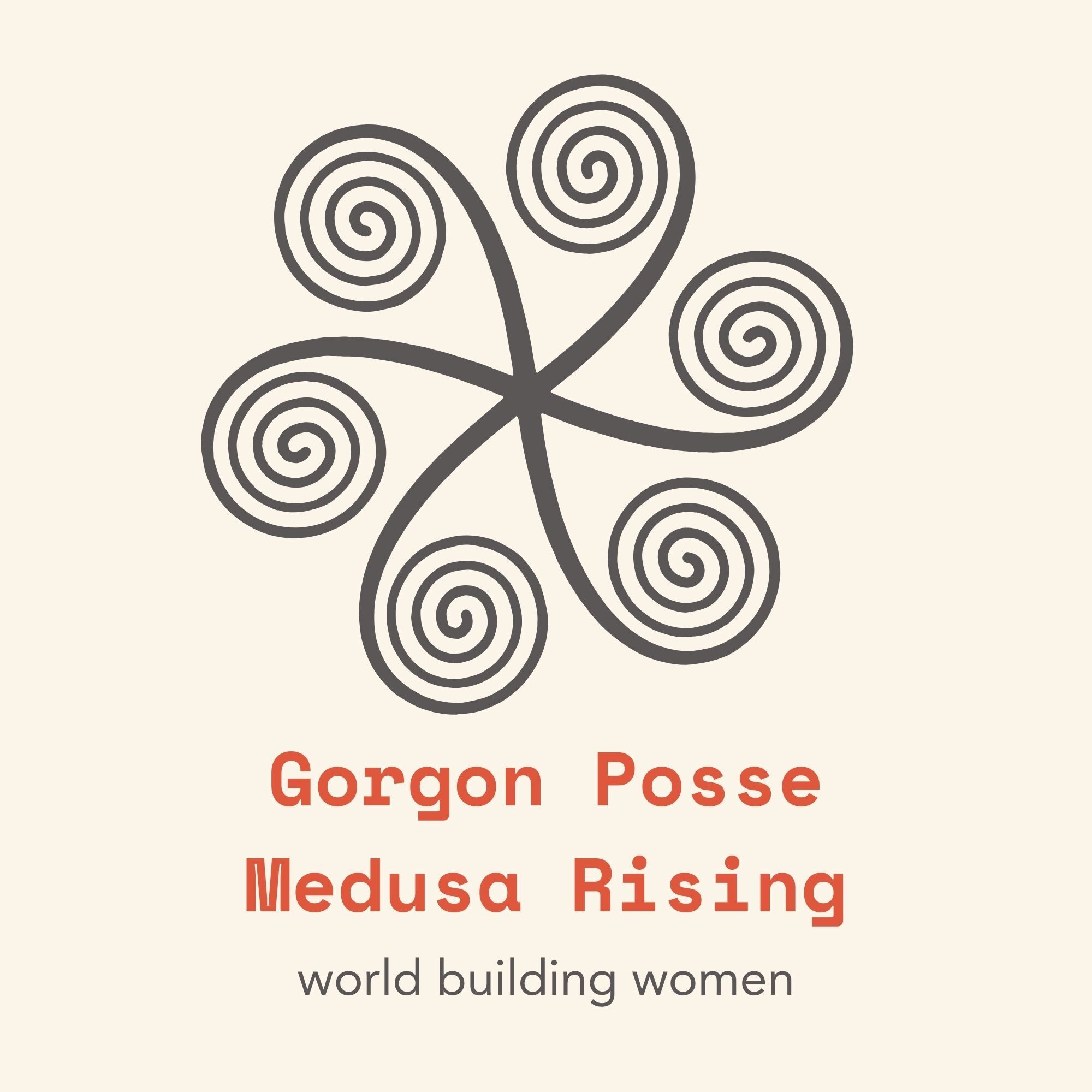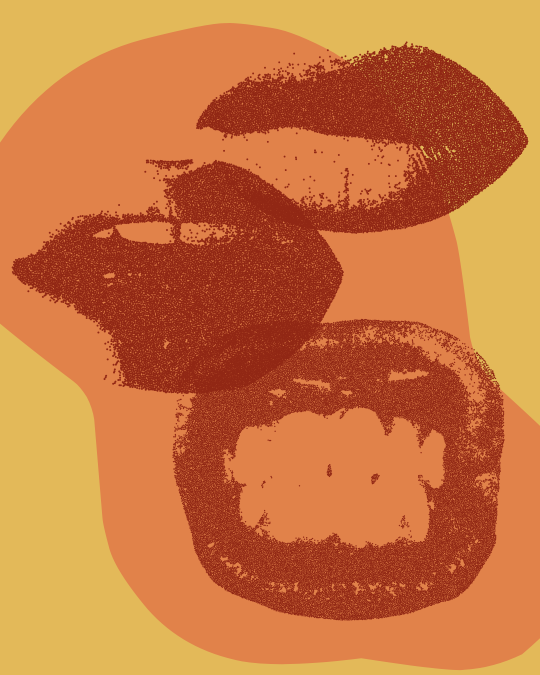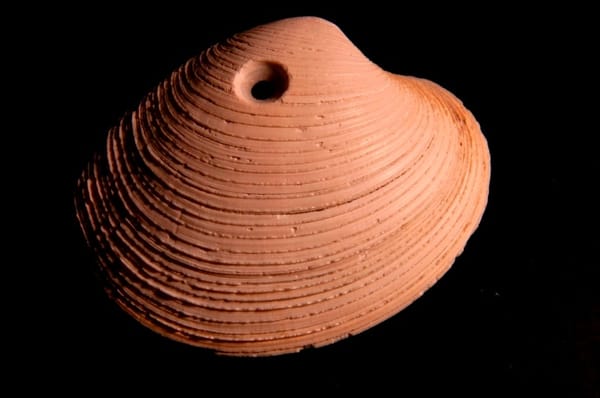Honoring the Goddess-Snake |by Esmée Streachailt
Anyone else need a mental health break? Yes? Cool. Let's talk about the snake women and snake goddesses I called on to help hold Medusa Rising.
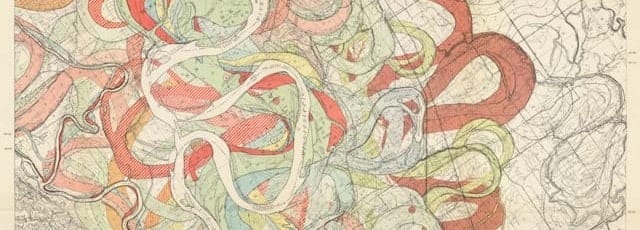
[Accidently published in April, so we apologize to those of you seeing this twice!]
Where I live, writing in early April, it's nearly warm enough for the snakes to come up out of hibernation. In another week or so the daffodils will be near their bobbing golden end, and that's when the snakes wake up. It's got me thinking about the serpent powers I've called on, as every use of a name is a calling to its meaning — and I need a break from The Emergency. We who can take a break should, this is a long long game.
( ^-^)ノ∠※。.:*:・'°☆ ( ^-^)ノ∠※。.:*:・'°☆ ( ^-^)ノ∠※。.:*:・'°☆
Marija Gimbutas, the archeologist to whom we owe our certainty of matriarchal/gylanic civilizations, interpreted the Snake Goddesses she found in her digs in Eastern Europe were symbols of life energy, of emergent feminine creation, and of regeneration both through death and through growth (shedding). The Great Goddess in her snake form is found across the pre-his-toric world and from some its earliest stories and artefacts.
Here's a brief discussion (from 11:00) with Gimbutas herself from Starr Goode's cable TV series The Goddess in Art (1986-1991).
The Corra
By the time we meet Corra, she's already gone. She has this in common most divine feminine serpents. We meet her so late that I'm surprised at how her death at St Patrick's hand (for the Mother must die for the godlet to dominate) echoes Marduk's disembowelment of his mother Tiamat. Judith Shaw relates it this way:
In one version of the story when Corra faced down St Patrick at Lough Derg She swallowed him whole. As Mircea Eliade noted in Rites and Symbols of Initiation, being swallowed by the snake can be seen as a return to the womb and – “a complete regeneration of the initiate through his gestation and birth by the Great Mother.” St Patrick passed two days and two nights within Corra cutting his way out and killing her in the process. The water of the lake turned red with Her blood and Her body turned to stone.
I mean, OK, but one really need not murder Mother to be reborn. Like all snake goddesses, she is a goddess of the Great Cycle, and in this is an avatar of the Great Goddess and sister to the snake goddesses of Europe. I feel a preciousness around Corra because of all these divinities, I expected to find her the least. The Irish stories of snakes began in my youth as actual snakes, revised to metonymy for the Druids, but none of those hinted that (as there almost must be) there was a symbol of the Goddess that must go back so, so very far. Corra feels to me like she must be a memory, a Goddess carried all the way and then nurtured in this land where her animist correlate was not to be found. The care with which her people carried her wells up in me as tears.
The Yacumama
Yacumama is another story. I have found, so far, very little on her other than that she is one of a trinity of creation snake goddesses in the Amazon. And she is not the gentler of the three. The Mother of Waters and their creatures is happy to eat anyone and anything that gets close. I have a feeling that threat was once a protective function and has been reversed, but I'm still looking. She's fierce in a way that feels as impersonal as the Great Goddess in her Great Cycle. In a time of influencer overdoses of romanticized goddess talk, Yacumama has reminded me of how much She is on the side of Life, just not of my life in particular. I am a part of her, she owes me nothing.
The Nagas
Nagas are divine creatures of both sexes. Often both human and snake, or alternating in form, they are connected to wisdom (as the Corra) and to rivers (as the Yacumama), but also to protection as in the case of Buddha's meditation under the Bhodi tree. The Naga comes to protect him from the rains. They signify a live connection with chthonic and animist origins, the deep relation among humans and our ecological cousins, of many traditions in and south of the Himalayas. In my imagination, they are braided into and to braid together with their world, outerworld, people, and gods. They are not this to any subcontinental people, but to me they call up the oscillation at the heart of life.
The Ouroboros
These rather literal creatures' bodies are the Great Cycle, from mouth to tail. The Ouroboros originates in Egypt and officially has no sex, but is a world serpent and protector, moving its very being through the cycle of regeneration-life-death, so I have claimed this creature for a goddess. It happens that my husband's mother gave me one of her bracelets on our second meeting. It's a serpentine weave chain of silver with a dragon's head that clasps its tail in its teeth to close. I don't know if she knew how deeply snakes run in the ancient and prehistoric symbolism of women, but I like to think she did. And, she's read all my writing since we met, so she does now!! :D

The Pythia
She is the oracle of Delphi, the temple to the Goddess, and her interpreter. The men who need to murder her and The Mother to clear the way for their order claim she was hard to understand. A pre-Indo-European speech might have been. Or, they might have been claiming a distance from Her way of sense-making. But her name connects her directly to Python, the great serpent who protected the well and its priestess, or who might have been the original oracle herself. Python is one of Gaia's children by Uranos. Their sexual cosmogony created beautiful creatures, titans and titanides, and monsters alike. I can't tell you which side of that divide Python would be, but she's no monster to me, only a power as near to Gaia as can be. Gaia, on the side of all life, found all her children beautiful. No matter how we tell the stories, it's a father or a son who creates the damnation of othering, of rejection of some part of the paradoxical and necessary whole.
[I couldn’t find images of Pythia or Python Delpyne that weren’t pro-Apollo propaganda.]
And the Medusa
Readers here know many stories of this gorgon girl. Many of us connect deeply with the many violent betrayals she suffers in men's stories. Like all these goddesses, and many the Greeks keep in demoted forms, Medusa is much older than the culture that took the privilege of using her for their ends. In her older, and physically powerful, gorgon form, she guarded the first archaic temple, to Artemis the Mistress of Animals and a wild goddess. She whole, winged, attended by magical lions--like many goddesses we all know. In the stories Artemis's pre-Mycenean cult told, she might have been a sister to Artemis, the animal expression of her power. I am guessing, I want to point out, and guessing this because this kind of separation and demotion is so common to sister goddesses in stories men tell themselves. She bares her fangs, her mouth is wide open in a shriek. She is the embodiment of loudness. Medusa = unapologetic. My happy-warrior Aries Moon loves jives with her.
A crown of snakes and a crown of sunrays echo each other, a sun sister could be a protector to a moon sister, and many old cultures empersonned the sun in a goddess. Patricia Monaghan studied these solar goddesses across time and cultures in O Mother Sun!: A New View of the Cosmic Feminine. Elements of her myths connect her back to the Assyrian Humbaba (dismemberment), Japanese Amaterasu (mirrors), Scandinavian Sunnu (turn viewers to stone), Egyptian Hathor (snakes on the head), Indian black Kali (heads, extended tongue, snaky hair). She has been read to represent knowledge men should not have, protection for women and goddesses, and the source of male virtue in her offspring Pegasus and Chrysor.
Patricia Monaghan (1946-2012), for any who have come to know her work, was a major figure in the women's spirituality and eco-feminist movements — which, for many women, were the same movement. She was also a co-founder of The Black Earth Institute, and a poet. Monaghan's book inspired this lovely video and divine chant in 2021.
Her chapter on Medusa is titled “When the Goddess Smiles, She Bares her Teeth,” which feels right, doesn't it? So many goddesses are wild, fierce, canny, and dangerous even when they are of the sun. We sometimes think of our dangerous goddesses as dark — Kali, the Morrigan, Hecate, Tiamat — but the Great Mother is all, dark-light-dark-light. Snakes burrow to rest, snakes warm their bodies in the sun.
Two serendipities arrived as I rested a bit this week, diverted my soulmind from the shitshow of my country, to write and muse about divine serpentine women. It’s just getting warm enough now, just past Ostara, for the snakes to begin emerging. One is that Monaghan was familiar with Hélène Cixous's “The Laugh of the Medusa.” French Theory?, you might say, for a feminist spiritual eco-activist? Yes. To me there's never been a real separation between these, or between theory and spiritual exploration for many French feminist theorists. Of Cixous's essay, Monaghan writes, she looked
upon the Gorgon's face, … that terrifying visage that indicates the point at which we must stop and seek no further. And Cixous did not find petrifying the confrontation with the face at the edge of received knowledge. Rather … an antidote to the paralysis of patriarchal thought. [She] emerges from the encounter … not only unscathed but empowered. Medusa, she [famously] reports, is ‘not deadly. She's beautiful, and she's laughing.” (232)
I can tell you I have things to say about Nietzsche's gaze into the abyss and this silent, sisterly conversation. As well as about the limit of the gorgon's face, her demotion, her relation to meaning and Derrida's logic-rustling aporia. I think it's time to turn to wider themes than the US and its undoing. This contact with Monahan convinced me I need to return to my TRN series RE: Framing Radical Feminism and spend some time with Cixous. We had a least one reader who was eager for me to work my magic with Cixous, so now I will!!! The signs have all shown themselves. It's going to be a ride and a joy for my philosophy feminists who read here!!
The other serendipity, OK, this is where I'm possibly leaving the world of history for the world of deeply felt metaphor, but come on along!! Below is this boggling post from Facebook that explains to my mindsoul that snakes move in prime numbers, which are whole to themselves and irregularly cyclical, which let's me reach poetically for the notion that actual snakes are are Her writing the Goddess's own language across Her own waters. And can bet your well-grounded feet I'll be coming back to this in my next series on Cixous!!!
From Cassiopeia Nature on Snakes, Water, and Primes
When swimming through water, the snake leaves traces in the form of wavy circles that precisely correspond to the dynamics of prime numbers.
A prime number is a natural number greater than 1 that has no positive divisors other than 1 and itself. Prime numbers are unique numbers.
Don Zagier, a renowned expert, stated: "Looking at these figures, one feels the presence of one of the inexplicable mysteries of creation."
The images you see here are created using circles with diameters of successive primes, superimposed and repeated from a common origin. For each natural number "n," we draw a periodic curve from the origin intersecting the "x" axis at "n" and its multiples. Prime numbers are those intersected by only two curves: the prime number itself and one.
This is a simple method of constructing prime numbers using geometry.
Do magic! Make the algorithm feminist! Shift the vibe!
Share this work far and wide!
Dedicate this post to a woman you admire,
nudge us for more like it.
Starting at $2 USD per month | Access to Medusa Gazes videos, Commenting & conversation, External reading recommendations, & Special Event invitations.

* NEW EPISODE *
( ^-^)ノ∠※。.:*:・'°☆ ( ^-^)ノ∠※。.:*:・'°☆ ( ^-^)ノ∠※。.:*:・'°☆
